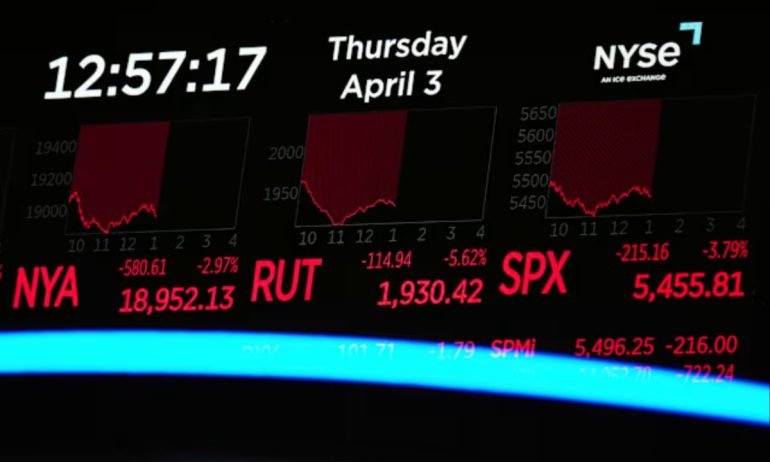The Dow Jones Industrial Average (DJIA) experienced a dramatic downturn, dropping over 2,000 points in a single trading session—its steepest loss since the pandemic era. This 5% decline dragged the index down to 38,500, marking a 10-month low and putting it nearly 18% below its all-time highs from last November. The market’s sharp fall reflects growing investor fears amid escalating global tensions and policy risks.
Global Sell-Off Deepens as US-China Trade War Escalates and Investor Confidence Wanes
The turmoil wasn’t limited to the Dow. The S&P 500 index fell over 300 points, down 5.5%, and the tech-heavy Nasdaq Composite also shed around 1,000 points, mirroring the 5.5% decline. The sell-off was broad-based, impacting major sectors and signaling a deep risk-off sentiment among global investors. Equity markets around the world are reacting strongly to increasing volatility driven by geopolitical and economic uncertainty.

Markets were rattled further by the escalating trade conflict between the US and China. Following the Trump administration’s imposition of a 34% tariff on Chinese imports, China responded with its own retaliatory 34% tariff. These moves have intensified fears of a prolonged and damaging trade war, undermining investor confidence and exacerbating the market downturn. Economic observers have also criticized the US’s tariff calculation method, adding fuel to the backlash.
Labor Market Cracks Emerge as Fed Faces Pressure Amid Mounting Economic Uncertainty
Despite a strong Nonfarm Payrolls (NFP) report showing the addition of 228,000 jobs in March, the labor data failed to halt the market slide. Wages grew slower than expected, and the unemployment rate rose slightly to 4.2%. While job creation appears strong on the surface, underlying weaknesses are beginning to show, suggesting that the economic outlook may not be as robust as the headline numbers imply.
As market stress builds, traders are increasingly betting on significant interest rate cuts from the Federal Reserve, hoping for at least 100 basis points in relief before year-end. However, this hope clashes with cautious messaging from Fed officials, who are wary of reacting too quickly amid fiscal uncertainty. The Dow’s plunge below key technical levels—including its 200-day EMA—signals deeper challenges ahead, with investors bracing for more pain as trade policies and economic data remain at odds.

